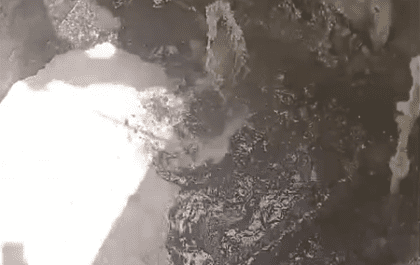The new environment safety guidelines on diesel generators (DG) have left residents and businesses in split for compliance. As per circular dated February 10, 2023 by PIB Delhi, diesel generator (DG) sets of capacity up to 800 kW shall be permitted for industrial and commercial sectors in the entire NCR, subject to their conversion to dual fuel system in areas where gas infrastructure and supply is available.
In a move to comprehensively prevent, control and abate air pollution caused by diesel generator (DG) sets in the National Capital Region (NCR), the Commission for Air Quality Management in NCR and adjoining areas (CAQM) has directed NCR State Governments and NCR pollution control boards that, for periods other than during ban/ restrictions under the Graded Response Action Plan (GRAP), any use of diesel generator (DG) sets of capacity up to 800 kW shall be permitted for industrial and commercial sector in the entire NCR, only subject to their conversion to dual fuel system (70% gas + 30% diesel) in areas where gas infrastructure and supply is available.
CAQM has observed that amongst others, uncontrolled use of DG sets is a matter of concern. A large number of DG sets operating in the region without adequate emission control measures, even during periods other than the ban under GRAP, cause heavy air pollution and are thus a major contributing factor to the deterioration of air quality in the region. Therefore, regulating the use of DG Sets even for the periods when there is no ban or restrictions imposed under the GRAP, is the need of the hour.
According to CPCB, the emission of oxides of nitrogen and hydrocarbons in a diesel generator with up to 19 kW power should not exceed 7.5g/kW-hr. The emission of carbon monoxide should not exceed 3.5g/kW-hr while particulate matter should not exceed 0.3g/kW-hr. The smoke limit for such generators is kept at 0.7 m.
For gensets with power between 19 kW and 75 kW, the emission limit for oxides of nitrogen and hydrocarbons for these gensets is 4.7 g/kW-hr. The emission of carbon monoxide should not exceed 3.5 g/kW-hr while that of particulate matter should be under 0.3 g/kW-hr. The smoke limit here is 0.7 m.
For gensets with power between 75 kW and 800 kW,the emission of oxides of nitrogen and hydrocarbons by gensets in this range should not exceed 4.0 g/kW-hr. The emission limit for carbon monoxide is 3.5g/kW-hr while that of particulate matter is 0.2g/kW-hr. The smoke emission should either be equal to or less than 0.7 m.
While these interventions to manage and control pollution are welcomed by the masses, the lack of infrastructural support to comply is increasingly challenging. Societies like Prateek Stylome along with a few more have adopted LPG conversion kits successfully. The question is, is it reliable and safe, though it may comply with the guidelines? For answers to these questions, we have tried to reach out to CPCB but no clear inputs could be captured.
It is desired that NGT and CPCB should issue a notification with the implementation plan with safe and recommended methods along with the infrastructural support including financing. Many apartment owners and resident welfare associations do not have surplus funds to accommodate such large capital expenditure. Furthermore, resident societies who are still managed by developers/builders, who and how compliance will be done? Is it right for forming AOAs/RWAs to take handover of non-complied DG sets? This may comprise the noble cause of comprehensively preventing, controlling and abating air pollution caused by diesel generator (DG) sets in the National Capital Region (NCR). With this article, we encourage everyone to share their learning, and success stories to Saurabh Saxena, +919007950505 and put a request to NGT / CPCB to come up with a firm plan.
Popular Stories
How To Revive Your Rainwater Harvesting System
The Water Couple’s Journey: From Cleaning Tanks to Complete Water Solutions!
Locals Felling Trees Near Sec A Pkt C
Winning Has Become a Habit for Divya
Is Green Park Heading Towards A Slum
Haphazard Parking, Narrow Walking Space In M Block Market
Recent Stories from Nearby
- Elections at Silver Oaks April 5, 2025
- Silver Oaks Rangotsav: A Vibrant Celebration of Holi April 5, 2025
- Sarvam Shakti: A Decade of Empowerment and Grace April 5, 2025
- Turning Waste into a Valuable Resource April 5, 2025
- Stray Dogs Menace & Management, A Block Extension April 5, 2025






